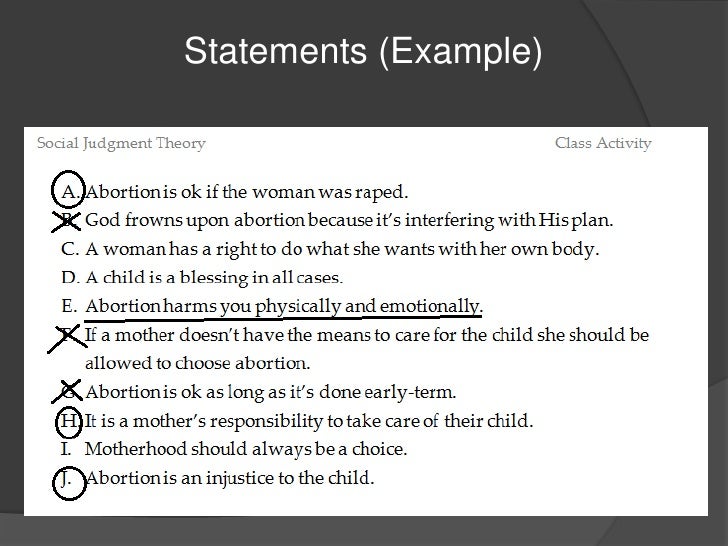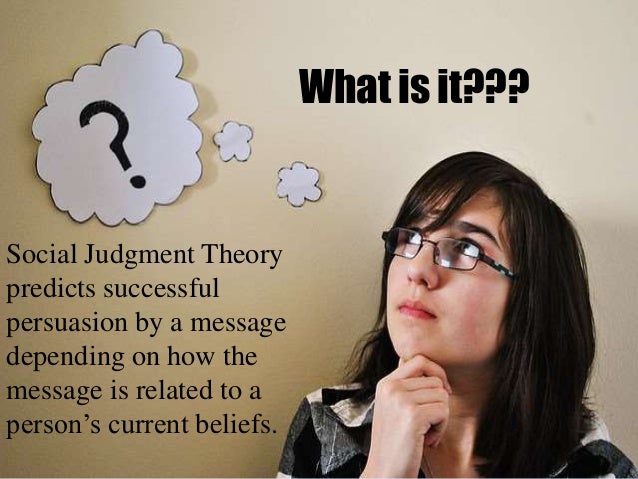

From an epistemological perspective, SJT is considered a scientific theory that has one truth of how people receive messages. Social judgment theory is attributed to messaging interpretation from an anthological perspective that individual behaviors can be predicted. To achieve the objective of the paper we will use social policy creation on the issue of abortion and demonstrate how SJT was used to hire Howard and Susan as Supreme Court judges. The purpose of this paper is to explore social judgment theory as it pertains to its applicability in everyday live. With this example, SJT was used to persuade the public of reasons why abortion should or should not be legalized. During their hearing process, these two judges took a stand on the issue of abortion and could persuade their congregational committee on the social issue of abortion. For example, Howard Pryor and Susan Caulfield were appointed to Supreme Court because of their stand on the abortion issue. In social policy development SJT has been used to persuade different groups of people to stand against abortion. Commercial business industry uses SJT to determine consumer perceptions of the products and services that are being introduced to the market. This theory deals with communication and persuasion within social context and is applied in virtually everyday situations. Social judgment theory has influenced psychology of making judgments and decisions for the better part of the 20th century. Central idea of SJT is that individual’s attitudes change through mediated judgmental processes subsequence that information that affects and persuade people.

The SJT continues to indicate that individuals will reject or accept a message depending on their involvement and latitude that fall within their acceptance.

From the perspective of the father of social judgment theory, a person would reject or accept a message depending on his/her cognitive map. According to Social judgment Theory, individuals making Judgment must have a well-structured attitude before developing up any persuasive message.


 0 kommentar(er)
0 kommentar(er)
